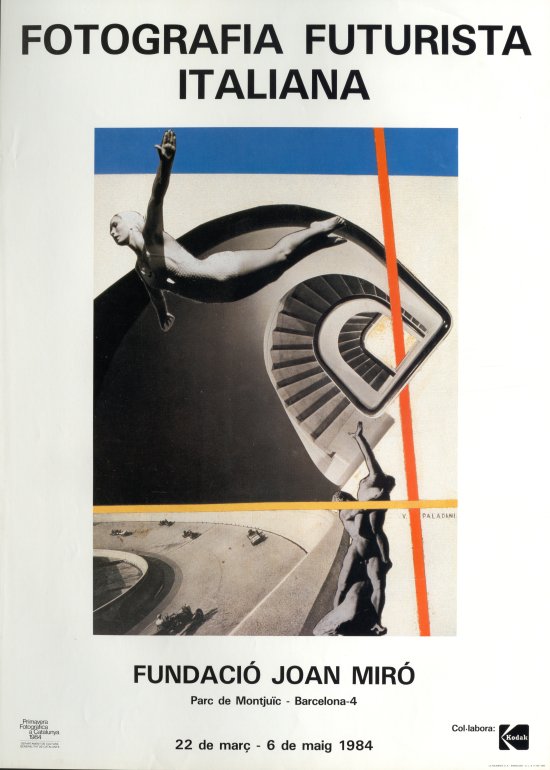- Dates
- —
Italian Futurist Photography
LA FOTOGRAFÍA FUTURISTA ITALIANA
Futurism is perhaps one of the artistic movements of the 20th century that has been most indirectly known in our country: through publications, studies, essays and reproductions. Its widely scattered works – and in many cases their loss – has made it difficult to prepare the few exhibitions that have been staged on the subject.
The Fundació Joan Miró has wanted to participate in the ‘Photographic Spring in Catalonia 1984’ by presenting a specific aspect of Futurism: the photographic production of those associated with the movement in Italy. It is well understood that Futurism emerged above all as a doctrine, philosophy and art of living that was highlighted in every manifestation of the thought of its followers. It is therefore not surprising that those who expressed themselves through photography found it the ideal medium for putting the theory of dynamism into practice.
Many Italian photographers felt attracted to Futurism, and many Futurist painters started out in photography. The sum of both these factors led to a wide-ranging and unprecedented exploration of the new visual possibilities of photography outside the traditional field of the plastic arts.
The set of 160 photographs taken between 1911 and 1939 by thirty-four artists illustrates the various research trends generated by the Futurist conundrum and the photodynamics that brought photography out of the impasse it had reached in the debate between ‘realists’ and ‘pictorialists’, bringing the research of the Italian avant-garde to the international scene.
The ‘Futurist portrait’ – emblematic or kinetic, spiritual or gestural, metaphorical or anamorphic portrait – appears as one of the privileged bases of innovation for photographers.
Surrealist-like or ‘object camouflage’ photography, ‘photoplastics’, photomontage, photo collages and abstract photography, as well as cinetisations and ‘aerial photography’, specifically represent Futurist research trends inspired by Marinetti and the Futurist manifestos.
Paladini’s photographic compositions (Imaginism) and those by the group from the magazine Campo Grafico (Constructivism), which were not included in the first official exhibitions of Futurist photography in the years 1930-1933 (Rome, Turin, Trieste), are included in the exhibition as inquiries by an Italian avant-garde confronted with Futurism.
The Fundació Joan Miró would like to express its sincere gratitude to Kodak for helping to present Italian Futurist Photography in Barcelona.
Fundació Joan Miró


